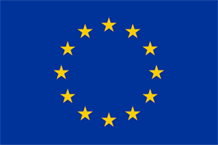Since 2019, the Carbon-14 Labeling Laboratory (LMC/SCBM/DMTS) has been developing new, simpler, faster and more efficient drug labeling strategies using dynamic carbon isotope exchange. This concept allows, in the same reaction, the breaking of a 12C-12C bond and the formation of a new 12C-14C bond (14C = carbon 14, radioactive isotope of carbon) while keeping the original structure of the drug.
So far, the isotopic exchange has been performed in the presence of carbon dioxide (14CO2) as a carbon-14 isotopic source. Several complementary approaches have been published: by copper catalysis (JACS 2019, read the news item "CO2 and copper to label pharmaceuticals with carbon" published in January 2019), by simple thermal heating, without catalyst (Angewandte Chemie, see news item "Carbon-14 labeling of anti-inflammatory drugs with CO2" published in May 2020) and recently photochemically using an organic catalyst activated by blue light (ACS Catalysis, see news item "Carbon labeling using light" published in February 2021).
With the goal of pushing the boundaries of isotope exchange and increasing its versatility to other chemical functions, LMC/SCBM researchers have explored the activation of carbon-cyano group (12C-12CN) chemical bonds. The activation of these bonds, i.e. the ability to break them, is already known but remains a puzzle for chemists because they are known to be very stable. Organic molecules containing a cyano group - nitriles - are versatile synthetic intermediates, precursors of amines, carboxylic acids, carboxamides, aldehydes, ketones and alcohols. In addition to its malleability as a functional group, the cyano group is present on a number of natural and pharmaceutical products, representing a valuable and versatile architectural element for labeling. The researchers propose a radiolabeling solution based on a reversible decyanation/cyanation procedure to enable the incorporation of a carbon-14 labeled cyano group (14CN) into pharmaceuticals using transition metal catalysis. Using a nickel catalyst and in the presence of phosphine ligands (PMe3) that stabilize the metal and keep it active, the researchers demonstrated not only that it was possible to activate this particularly stable bond, but also that in the presence of a suitable source of carbon-14 such as Zn(14CN)2 it was possible to replace 12CN with 14CN. In addition to being the best source of the cyano group, Zn(14CN)2 has a significant practical advantage: it is solid and easier to handle than carbon dioxide.
This proof of concept is the first example of nitrile isotope exchange. Studies to elucidate the mechanism of the reaction have been carried out, and the method has already been used for 14C labeling of a dozen bioactive molecules, such as drugs and plant protection products. Joao de Oliveira, a doctoral student at SCBM funded by an ANR-CIFRE grant in partnership with Sanofi, is currently in the process of transferring the technology for an application on a molecule of interest under development by the French pharmaceutical giant.
 European fundings
European fundings
This work was funded under the ERC Consolidator Grant (ERC-COG-2019)
FASTLabEX and the FET-OPEN
FLIX, coordinated by the CEA.